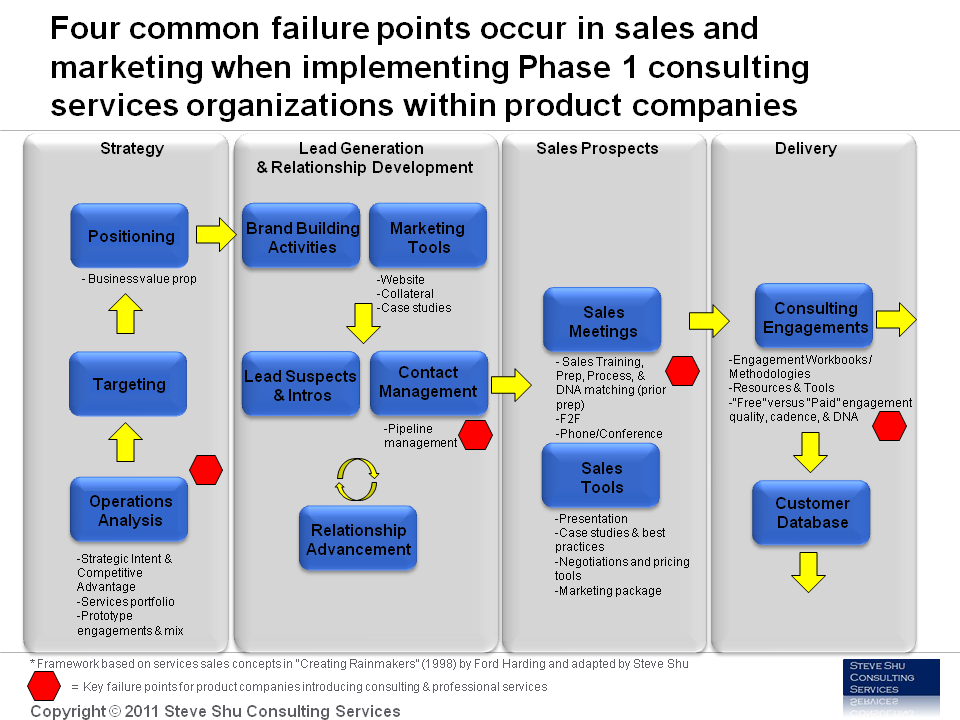In helping companies develop, tune-up, or reboot their professional services organizations, here are some example of complaints I’ve heard that reflect the need for change:
- Customer: “Instead of providing consulting services, your organization is marketing its products to me and asking me to pay the bill.”
- General manager of services organization: “I am not sure we know what services we sell versus what services are provided as part of the product pre-sales cycle.”
- Manager of services organization: “We have project in XYZ area, we’re doing another thing with company ABC, and we also have a lot of internal work on DOG. It’s really hard to report on where our time is spent.”
- Customer: “The consultants you’ve assigned seem to have good technical and analytical skills. I am not sure what they are doing to help me though.”
- Field manager: “Customer A is pretty much dead and will need a restart. We got to step 10 in the process before we realized our services team forgot to perform step 2 for quality control.”
- Manager of services: “How do we price jobs? How do we cost jobs? No particular method.”
- General manager of services: “Our folks have traditionally provided services for free, and now we are trying to charge money for them because the services have value. But our quality is not there, and we don’t have the discipline built into our DNA.”
One way to think about fixing these organizations is from the ground-up (roughly from delivery to project management to sales to strategy):
- Inventory the delivery team – What skills do these folks have on the technical side? What soft skills do they have in terms of dealing with clients? How can we develop the team’s leadership skills?
- Inspect either the project management or engagement management areas – To what extent is a cadence and communication structure established between the organization and the customer? Have there been frameworks or tools developed to support the customer-facing processes? Are there knowledge management processes in place to help with delivering greater value to the customer? What role does mentorship play in the organization?
- Analyze the sales process and key contacts with customer organization – What is the strategy for services? Do we have a crisp story on getting from needs to solutions and services? Do we proactively manage the sales pipeline? Who owns and follows-through on key customer contact points? Is there a customer satisfaction process that involves both direct parties delivering and independent parties objectively evaluating the quality of services delivered?
- Assess what’s next for customers and how your company’s boundaries fit into a larger, whole solution for the customer – What role should thought leadership play? How can the services organization figure out how greater value can be added to the customer experience? Should we expand the offerings? Should we partner with other companies? Or maybe we should change the total mix of products and services so that the customer can derive additional value on their own?
Professional services organizations are complex, and the above framework enables one to start to think about how one can make improvements that affect services delivered today, while keeping other areas in perspective for handling somewhat further down the road.
Please feel free to let me know about your thoughts and experiences. Thanks!
Related post: Special Discussion On Starting Consulting Services Organizations Within Product Companies

